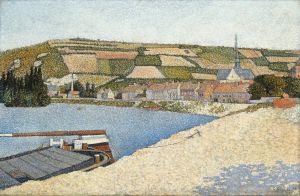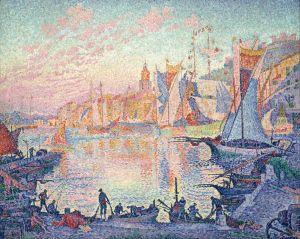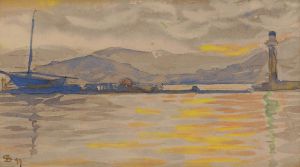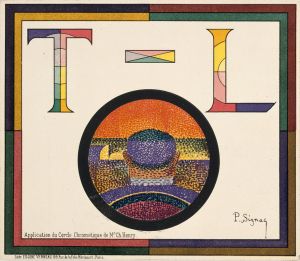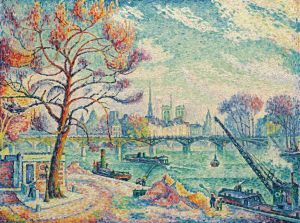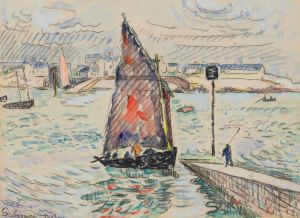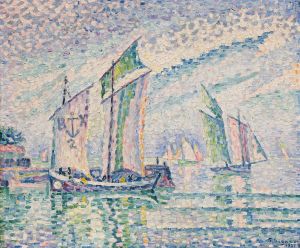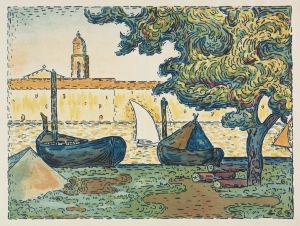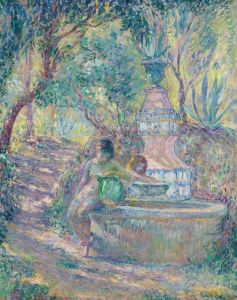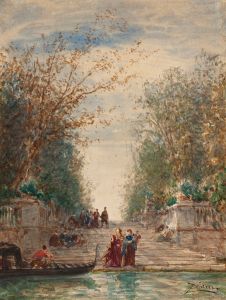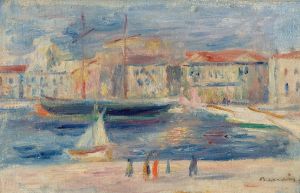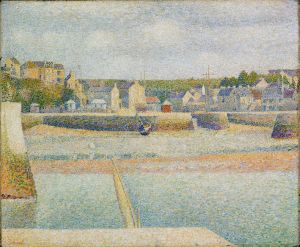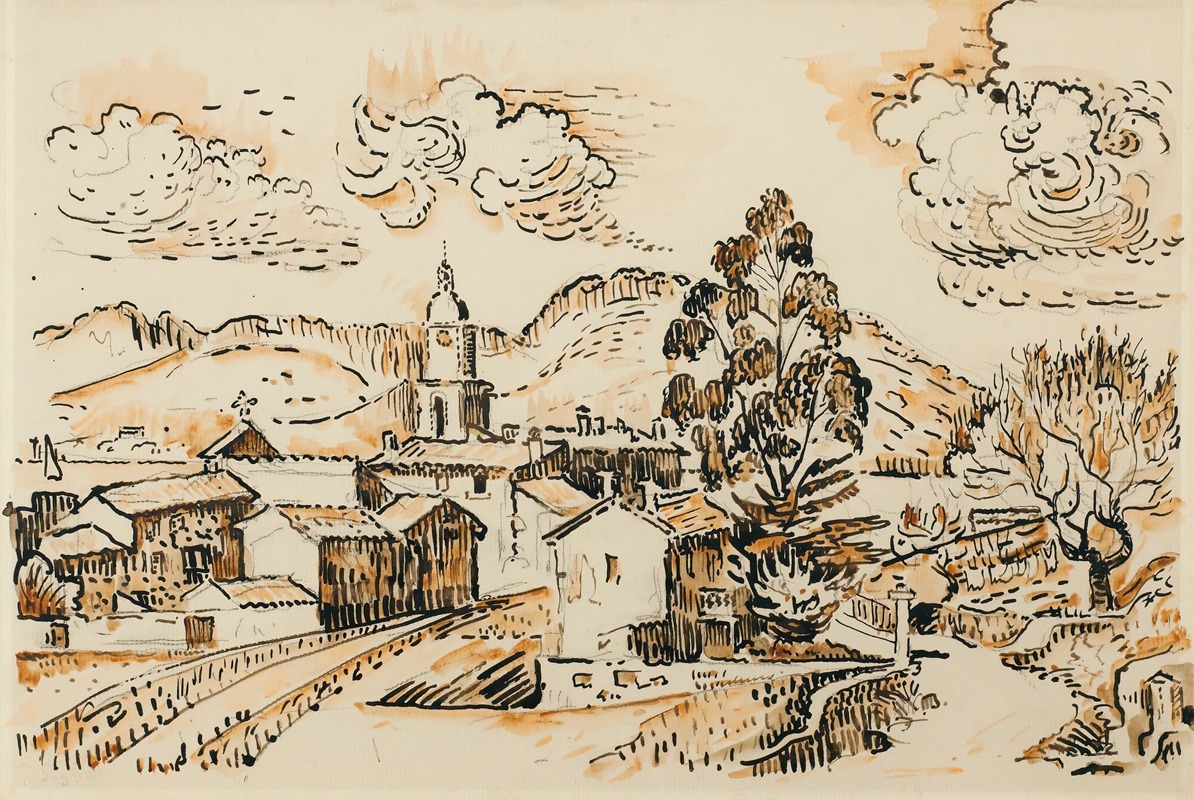
Saint-Tropez, Le Clocher
A hand-painted replica of Paul Signac’s masterpiece Saint-Tropez, Le Clocher, meticulously crafted by professional artists to capture the true essence of the original. Each piece is created with museum-quality canvas and rare mineral pigments, carefully painted by experienced artists with delicate brushstrokes and rich, layered colors to perfectly recreate the texture of the original artwork. Unlike machine-printed reproductions, this hand-painted version brings the painting to life, infused with the artist’s emotions and skill in every stroke. Whether for personal collection or home decoration, it instantly elevates the artistic atmosphere of any space.
Paul Signac's painting "Saint-Tropez, Le Clocher" is a notable work that exemplifies the artist's commitment to the Neo-Impressionist movement, particularly the technique of Pointillism. Signac, a French painter born in 1863, was a key figure in the development of this artistic style, which was pioneered by Georges Seurat. Pointillism involves the application of small, distinct dots of color that are applied in patterns to form an image. This technique relies on the viewer's eye and mind to blend the color spots into a fuller range of tones.
"Saint-Tropez, Le Clocher" captures the essence of the small, picturesque town of Saint-Tropez, located on the French Riviera. The painting focuses on the town's iconic bell tower, or "le clocher," which is a prominent feature of the Saint-Tropez skyline. This work is a part of Signac's broader exploration of the Mediterranean coast, which he began after moving to Saint-Tropez in 1892. The town's vibrant light and colors provided endless inspiration for Signac, who was deeply interested in capturing the effects of light and atmosphere.
Signac's use of color in "Saint-Tropez, Le Clocher" is particularly striking. He employs a vibrant palette that reflects the intense sunlight and the shimmering waters of the Mediterranean Sea. The painting's composition is carefully structured, with the bell tower serving as a focal point amidst the surrounding buildings and natural landscape. The use of Pointillism allows Signac to create a sense of movement and fluidity, as the individual dots of color seem to vibrate and interact with one another.
The painting is a testament to Signac's skill in balancing color and form, as well as his ability to convey a sense of place. His work in Saint-Tropez marked a significant period in his career, during which he produced numerous paintings that captured the unique qualities of the region. "Saint-Tropez, Le Clocher" is one of these works, showcasing his mastery of the Pointillist technique and his dedication to exploring the interplay of light and color.
Signac's influence extended beyond his own paintings; he was also an important figure in the art community, promoting the ideas of Neo-Impressionism and supporting other artists. He was a friend and collaborator of Georges Seurat, and after Seurat's death, Signac became a leading advocate for the Pointillist technique. His writings and teachings helped to spread the principles of Neo-Impressionism, influencing a new generation of artists.
"Saint-Tropez, Le Clocher" remains an important work within Signac's oeuvre and within the broader context of Neo-Impressionist art. It exemplifies the movement's emphasis on scientific approaches to color and composition, as well as its interest in capturing the transient effects of light. The painting is a celebration of the beauty of Saint-Tropez and a reflection of Signac's enduring fascination with the Mediterranean landscape. Through his innovative use of color and technique, Signac has left a lasting legacy in the world of art, and "Saint-Tropez, Le Clocher" stands as a testament to his artistic vision and skill.





